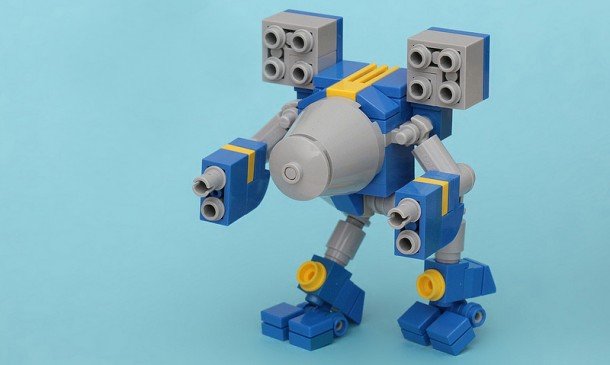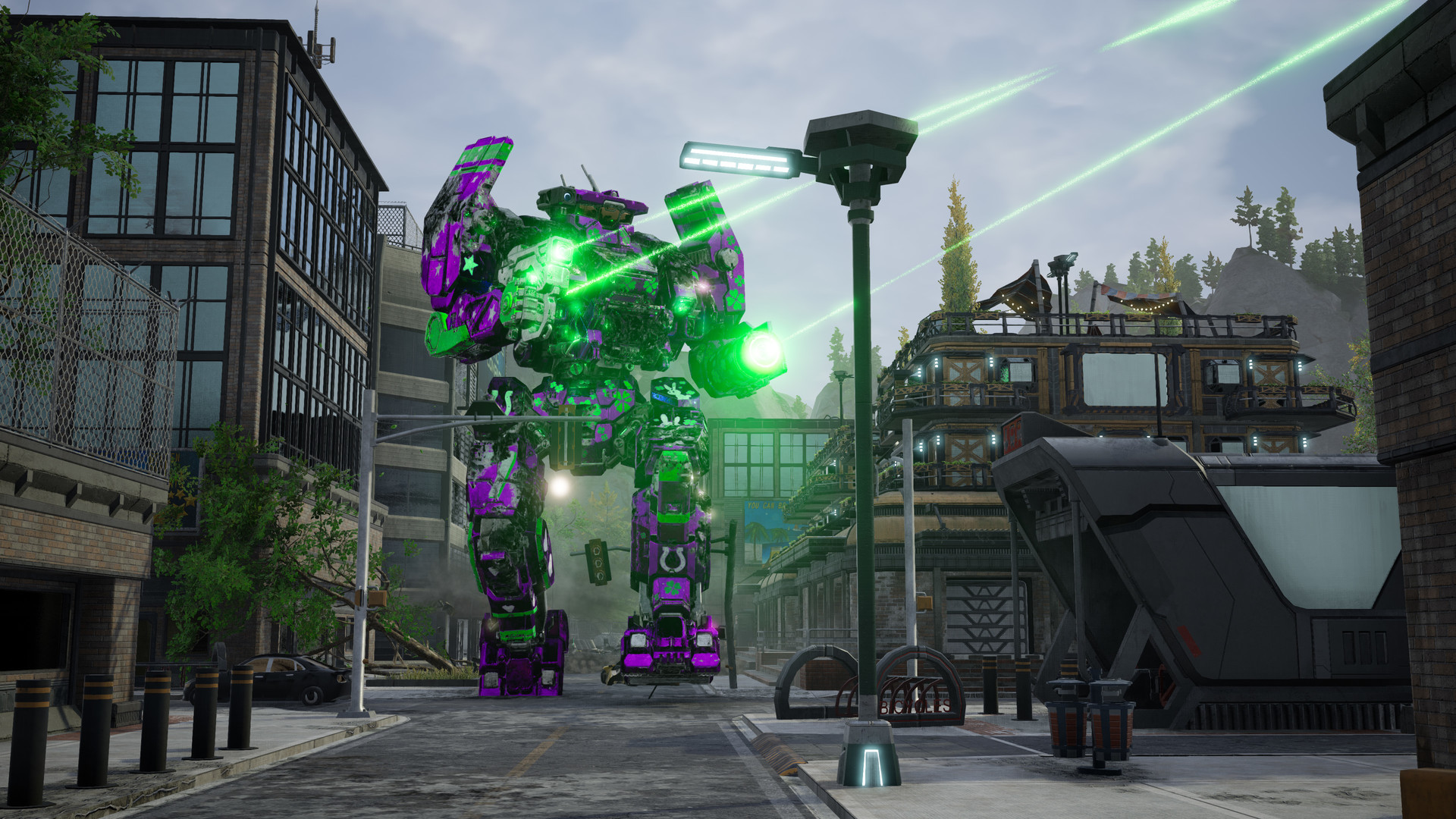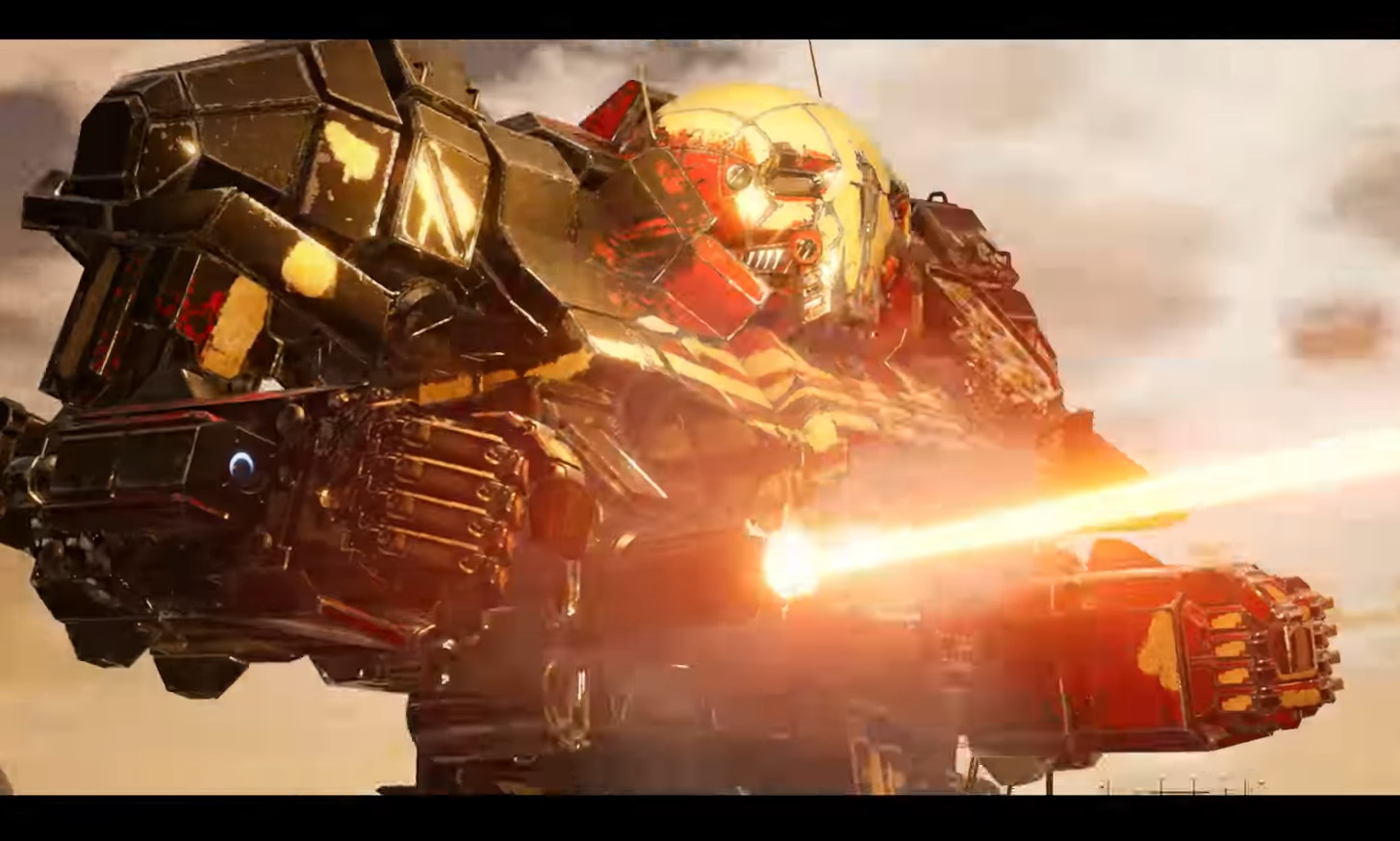Why mechs are the most fun thing to shoot in a videogame
Not zombies. Not mutants. Not bandits, pirates, helicopters, or mutant helicopters.

Ed Note: Here's an article I wrote in 2013 about the timeless design of mechs, one of the most interesting vehicles—and targets—in gaming, and what aspects of their design makes them so fun to shoot.
After dedicating my life to research, I've determined that mechs are the most fun thing to shoot in a video game. MechWarrior's mechs, specifically.
What makes mechs special? They're voodoo dolls. And piñatas.
(Above: digested thoughts in video form.)
There's a general notion in FPS design that where you shoot an enemy should matter. Most FPSes make some distinction between the effects of shooting an enemy in the feet and shooting them in the head, and when we fire a revolver, Spinfusor, or totally sick Stake Gun, simulated ballistics, hitboxes, damage modeling and work together to express our input. But these systems aren't in place simply for realism's sake—they're there to facilitate something humans have a need for: judgment.
“We have a deep inner need to know how we stack up,” as Jesse Schell puts it in The Art of Game Design. “The fact that games are excellent systems for objective judgment is one of their most appealing qualities.” Enemies are targets, targets are a method of judgment, and separating a target into segments is one way of building room for marksmanship to exist in a game. Headshots. The corner of the strike zone. The elusive 500-point hole in Skee Ball. How fun would a dart board be to throw at, after all, if the surface wasn't separated into segments?

Mechs happen to have more segments than most enemies: a head, center torso, right torso, left torso, right arm, left arm, right leg, left leg, and three equivalent rear torso zones. Eleven discrete targets. But it isn't necessarily that there are more areas to hit but that they have significance within the game itself. When you're being circle-strafed by a scout mech in MechWarrior, aiming for the legs is one approach to dealing with them. This act of “legging” an enemy epitomizes the "I have you now" moments the game produces: you get to steal from a light mech what made them special (speed), admire your marksmanship as the enemy limps, and make them experience the anxiety that comes from losing something that made them unique.
The biggest gaming news, reviews and hardware deals
Keep up to date with the most important stories and the best deals, as picked by the PC Gamer team.
Lasering out a Jenner's legs like this takes a sort of body awareness that isn't present in other games. It's sort of akin to what's expected of a boxer. Defensively, a good mech pilot twists their torso to avoid exposing vulnerable parts to an enemy. Offensively, a crack pilot can identify and dissect weak or valuable zones of mechflesh, much in the way that a welterweight might exploit an opponent's cracked ribs. As enemies, mechs wear their hurt on their sleeves (occasionally losing those sleeves altogether), and MechWarrior is one of the only games that grants you a secondary diagram of what you're shooting—the 2D damage display, a kind of visual voodoo doll.
Time to die
Central to the fun that arises from mech-slaying is how MechWarrior handles time. Mech combat (relative to Counter-Strike or Call of Duty, for instance) is slow and punctuated by many pauses. Waiting for heat to dissipate, waiting for weapons to cycle, waiting for a missile lock, waiting for your engine to catch up to your throttle command, waiting for your torso to rotate—these are purposeful delays. They create time to sweat, grit your teeth, iterate on tactics, or savor the gradual erosion of your opponent.
Without these delays, and without mechs' durability, there wouldn't be this temporal space for players' emotions to swirl in. If you've taken swings at a piñata, you've experienced the same sort of anxiety, uncertainty, and sadistic pleasure.
Whack. Did I get it?
Miss. Dammit. I'll choke up on bat this time.
Whack. Candy!
Laser blast. His left arm is orange. Good.
A missile barrage curls over a building at an unseen target. Did I get him?
Boom. His right torso is red. A couple more shots could do it.

It's the player's uncertainty and the durability of the target that makes piñata-crushing fun. MechWarrior grants you a sense of your enemy's vulnerabilities, but the game never allows you absolute certainty about when their steel shell will crack open. Not knowing when an opponent will pop creates pleasant, see-sawing anticipation and anxiety—moments like sneaking up behind an Atlas, sitting in its blind spot, and carving at it with Medium Lasers until it... almost... so close... just one more shot... one more... drops dead. Mechs' literal weight differences, too, also means it's meaningful when a Jenner fells an Atlas, or a Catapult bullies a Cicada with LRM barrages.
A suite of interconnected mechanics are at work under mechs' skin. As enemies, they're as expressive objects as you'll find in gaming, and their design presents problems that are inherently fun to solve.
On the next page: a chat with Piranha Games president Russ Bullock, creators of MechWarrior Online and MechWarrior 5: Mercenaries.

Evan's a hardcore FPS enthusiast who joined PC Gamer in 2008. After an era spent publishing reviews, news, and cover features, he now oversees editorial operations for PC Gamer worldwide, including setting policy, training, and editing stories written by the wider team. His most-played FPSes are CS:GO, Team Fortress 2, Team Fortress Classic, Rainbow Six Siege, and Arma 2. His first multiplayer FPS was Quake 2, played on serial LAN in his uncle's basement, the ideal conditions for instilling a lifelong fondness for fragging. Evan also leads production of the PC Gaming Show, the annual E3 showcase event dedicated to PC gaming.


